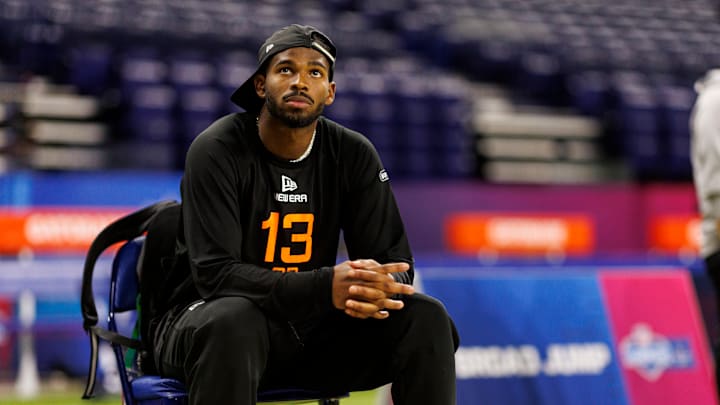The Pittsburgh Steelers entered the 2025 NFL Draft with a seemingly clear objective: find their future quarterback. Holding the 21st overall pick, many fans and analysts believed they were destined to take a signal-caller, especially with the uncertainty at the position heading into the new season.
But as the draft unfolded, plans took a sharp turn—thanks to the decisions made by other quarterback-needy teams.
The New Orleans Saints and New York Giants held higher picks and showed interest in drafting a quarterback. After the Tennessee Titans selected Cam Ward, the race for the next best QB prospect began. Many believed it was Shedeur Sanders.
RED MORE: Steelers' mock trade scenario would be a catastrophe for 2025 and beyond
With the ninth pick, New Orleans had a golden opportunity to solidify their quarterback room amid questions surrounding Derek Carr’s future. Yet, they shocked everyone by taking offensive tackle Kevin Banks Jr. out of Texas. That moment shifted the tone of the night.
Passing on Shedeur Sanders in the first round was a great decision for the Pittsburgh Steelers
As the picks continued and Sanders remained on the board, it became clear that teams weren't as high on the former Colorado State quarterback as expected. Still, a few teams had chances to change the narrative—and didn’t.
Perhaps most telling was the New York Giants' move late in the round. After trading up to acquire the 25th pick from Houston, they bypassed Sanders in favor of Ole Miss quarterback Jaxson Dart. It was a bold statement: Sanders wasn't atop everyone's draft board.
This chain of events ended up working perfectly for the Steelers. With quarterback options dwindling in value, Pittsburgh stuck to their board and selected the best player available—Oregon defensive tackle Derrick Harmon. Considered one of the top defensive linemen in the class, Harmon adds immediate punch to the Steelers’ front seven. He aligns with their long-standing identity as a defense-first franchise.
The decision to pass on a quarterback might’ve seemed risky, but the first round justified it. By not reaching, the Steelers positioned themselves to land Sanders—or another QB—later in the draft, without sacrificing premium talent at 21.
If there’s a post-draft gratitude list in Pittsburgh’s war room, the Saints and Giants should be at the top. Their decisions helped shape one of the Steelers’ most disciplined and strategic draft nights.
